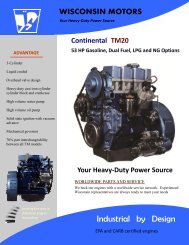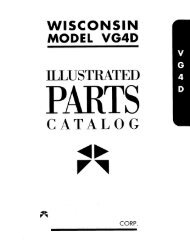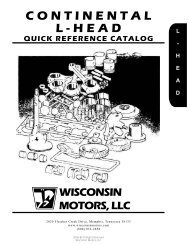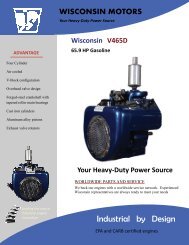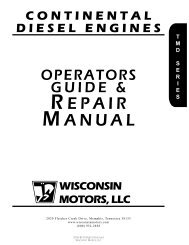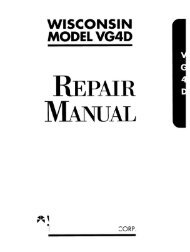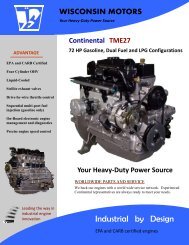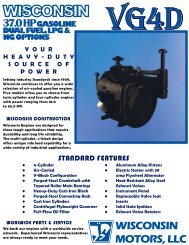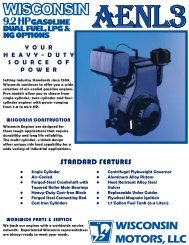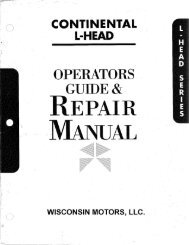Continental L-Head Overhaul Manual - Igor Chudov
Continental L-Head Overhaul Manual - Igor Chudov
Continental L-Head Overhaul Manual - Igor Chudov
Create successful ePaper yourself
Turn your PDF publications into a flip-book with our unique Google optimized e-Paper software.
CONTINENTAL L-HEAD ENGINE MANUAL Page 45<br />
The condenser in the distributor prevents excessive<br />
arcing at the contacts. When the contacts first<br />
open, the current tends to continue flowing across<br />
the gap. The c.ondensor absorbs tliis current until<br />
it becomes fully charged ; but by this time, the contacts<br />
have opened far enough to prevent the current<br />
flow. If there were no condenser in the circuit,<br />
the current wc.uld continue to flow arid cause an arc<br />
that would soon burn the contacts. The capacity of<br />
the condenser is designed to be large enough to prevent<br />
arcing and burning of the contacts and small<br />
enough to reduce the transfer of material from one<br />
contact to the other.<br />
The cam is designed so that the breaker points<br />
remain closed for a certain number of degrees so<br />
as to give the coil a given length of time to build<br />
up or become energized. This is called the cam<br />
angle, as shown below :<br />
If the horizontal faces of the inserts are<br />
burned -- replace the cap and rotor as this is due<br />
to the rotor being too short.<br />
2- Check Centrifugal Advance Mechanism --<br />
for "freeness" by turning the breaker cam in the<br />
direction of rotation and then releasing it. The<br />
advance springs should return the cam to its<br />
original position.<br />
3 -- Inspect Breaker Points and Gap -- if points<br />
are pitted, burned or worn to an unserviceable<br />
condition, install a new set of points. Badly pitted<br />
points may be caused by a defective or improper<br />
condenser capacity.<br />
If the condenser capacity is too high, the<br />
crater (depression) will form in the positive contact<br />
; and, i/ condenser is too low, the crater will<br />
form in the negative contact as shown on- the<br />
following sketch.<br />
CONTACT<br />
BRACKET<br />
BREAKER ARM<br />
CAM \,<br />
Figure 96---Diagram illustrating<br />
cam angle<br />
The cam is further designed to open the breaker<br />
points at a giw~n speed in relation to cam travel to<br />
obtain proper poin~ and condensor action. It is<br />
therefore important that the breaker points be adjusted<br />
to .020 gap so that proper cam angle is<br />
obtained.<br />
DISTRIBUTOR MAINTENANCE -- The distribufor<br />
operation is vital to the operation of the engine<br />
and the following items should be carefully inspected<br />
every 250 hours of normal operation ; however,<br />
dirt, dusL water and high speed operation<br />
may cause more rapid wear and necessitate more<br />
frequent inspections :<br />
1--Remove Distributor Cap- (without removing<br />
wires) -- Clean cap and examine for<br />
cracks, carbon runners, corroded terminals or if<br />
the vertical faces of the insexts are burned --<br />
install a new cap.<br />
OVER CAPACITY<br />
CONDENSER<br />
CONTACT<br />
UNDER CAPACITY<br />
CONDENSER<br />
BRACKET<br />
Figure 97 ~ Badly pitted breaker points caused<br />
by arcing due to incorrect condensor capacity



